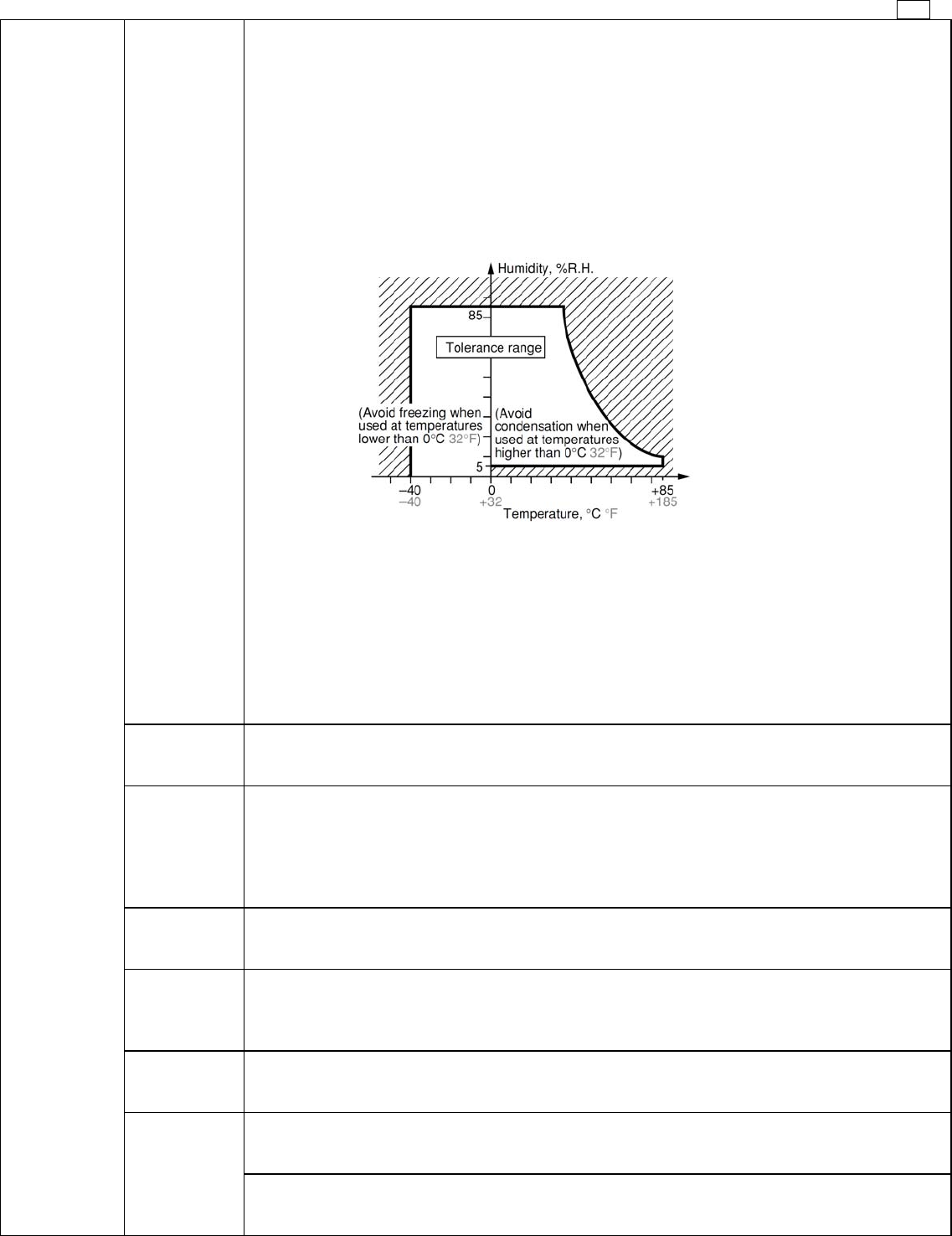
10
1.Temperature,
humidity,
air pressure
During usage, storage, or transportation, avoid locations subject to direct sunlight and maintain normal
temperature, humidity, and pressure conditions.
The allowable specifications for environments suitable for usage, storage, and transportation are given
below.
1. Temperature: The allowable temperature range differs with each relay, so refer to the relay's
individual specifications. In addition, in the case of transporting and storing relays in a tube package, the
temperature may differ from the allowable range of the relay. So, please contact us for individual
specifications.
2. Humidity: 5 to 85 % R.H.
3. Pressure: 86 to 106 kPa
Furthermore, the humidity range varies with the temperature. So, use relays within the range indicated in
the graph below.
(The allowable temperature range differs for each relay.)
-Be sure the usage ambient temperature does not exceed the value listed in the catalog.
-When switching with a load which easily generates arc in high-humidity environment, the NO
x
generated by the arc and the water absorbed from outside the relay combine to produce nitric acid.
This corrodes the internal metal parts and adversely affects operation. Avoid using them at an ambient
humidity of 85%RH or higher (at 20°C). If it is unavoidable to use them in such environment, please
consult us.
-Plastic sealed type relays are especially not suited for use in environments which require airtight relays.
Although there is no problem if they are used at sea level, avoid using them in atmospheric pressures
beyond 96±10kPa. Also avoid using them in an atmosphere containing flammable or explosive gases.
2. Dust It is recommendable to use relays in a normal temperature and humidity with less dust, sulfur gases
(SO
2
, H
2
S), and organic gases.
Sealed types (plastic sealed type) should be considered for applications in an adverse environment.
3. Silicon Silicon-based substances (silicon rubber, silicon oil, silicon-based coating material, silicon caulking
compound, etc.) emit volatile silicon gas. Note that when silicon is used near relay, switching the
contacts in the presence of its gas causes silicon to adhere to the contacts and may result in contact
failure.
Therefore, please use a substitute that is not silicon-based. Plastic also has air permeability so please
avoid using them in a silicone atmosphere.
4. Magnetism If relays are proximately installed each other or installed near highly-magnetized parts such as motor
and speaker, the relay may change its operational characteristics or cause malfunction. So, please
verify in actual installation and operational condition.
5. Vibration Vibration of the area where relay is installed may be enhanced more than expected depending on
installation condition of PCB. So, please verify in actual use condition. NO contact is the recommended
contact for the use at the vibration-frequent area because the vibration resistance performance of NC
contact is generally inferior to that of NO contact.
6. Shock It is ideal for mounting of relay that the movement of the contacts and movable parts is perpendicular to
the direction of vibration or shock. Especially note that the vibration and shock resistance of NC contacts
while the coil is not excited is greatly affected by the mounting direction of the relay.
Condensation forms when vapors when there is a sudden change in temperature under high
temperature, high humidity conditions. Note that condensation may cause deterioration of the insulation,
breaking of coil, and rusting.
12. Usage
ambient
condition
7. Dew
condensation
Note that if a relay is connected or installed with a high heat-capacity such as bas bar, connector,
harness, and PCB, heat removal phenomenon will accelerate cooling of the relay inside and promote
condensation. So, please verify in actual installation condition.


















